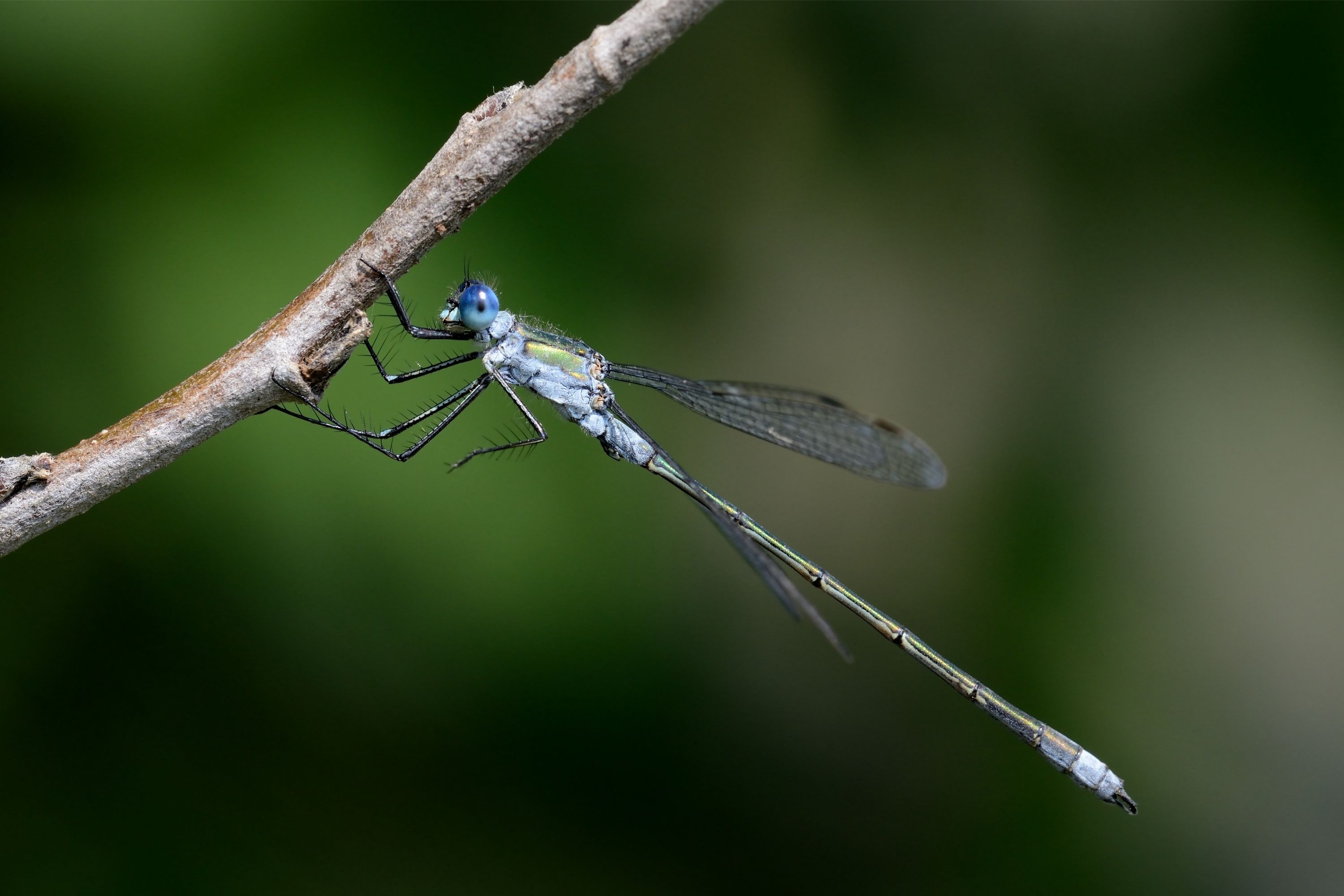Emerald damselfly
(Lestes sponsa)

Description
Lestes sponsa, is a damselfly, with a wide Palaearctic distribution. It is known commonly as the emerald damselfly or common spreadwing. Both males and females have a metallic green colour and when resting its wings are usually half opened. All species in the genus Lestes are very similar and are hard to separate in the field. The shapes of the anal appendages are characteristic. In L. sponsa the anal appendage is black with the superior appendage (which are the ones on the outside) with two internal teeth. The inferior appendage is elongated and cylindrical. In northern Europe five species of Lestes occur whilst in Europe as a whole there are six species, so identification can be problematical and it is best to look at as many features as possible. L. sponsa is a typical member of the genus with a green metallic body and wings held away from the body at rest. The abdomen is 26-33mm long and the wings are 19-23mm long. Mature males have a powder blue colour on the prothorax and on segments 1–2 and 9–10 of the abdomen. Mature males have blue eyes. Females lacks the blue colour. Immature males also lack the blue pruinescence and have greeny brown eyes. The pterostigmata of immature males are almost white. Preferred habitats of this species are pools, ponds and moorlands, it is a species of still or very slow flowing water. The emerald damselfly has a large Palaeartic distribution, and is found in a band across central Europe and Asia from Spain to the Pacific. It is not found in the far north in Europe and Asia or in the extreme south, being absent from southern Spain, southern Italy and Greece. It probably occurs in some areas of north Africa; where it occurs around the Mediterranean it is found at altitude. In Great Britain it is the only Lestes species that is common. One of the larger damselflies, this species is most common in July and August. It is often found by ponds and lakes, and is very rarely seen along flowing water. Emerald Damselflies like to perch among reeds, their colour providing good camouflage. They are not as strong fliers when compared to other common damselflies such as the common blue or large red damselflies, but they are more likely to be seen on misty, rainy days then those species. When disturbed they usually do not fly very far away, landing on another perch a few yards away.
Taxonomic tree:







